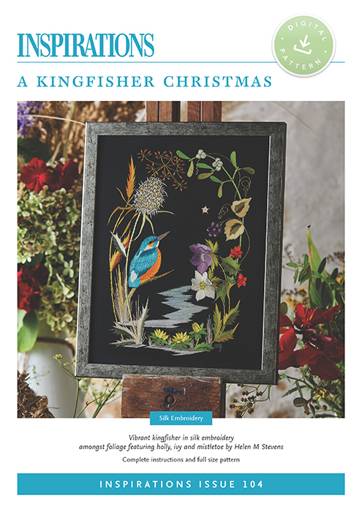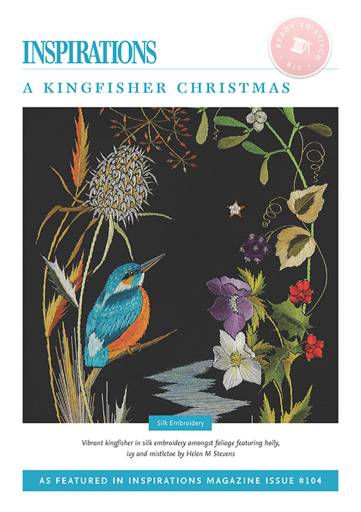A Kingfisher Christmas by Helen M. Stevens
6TH DECEMBER 2019 - ASU #215

We all seem to do a lot of waiting, don’t we? When we’re children, we seem to wait interminably for birthdays or for Christmas. As adults, we wait in a queue, we wait for a delivery or repair man to come, we wait for our teenage children to come home, we wait for grandchildren. But being patient and waiting can be positive things. For some creatures, waiting is a matter of survival. For others, it is par for the course.
The kingfisher is one such creature for whom waiting is essential.
A master hunter, the kingfisher can sit perfectly still until it spots a fish in a stream up to 10 metres from its perch. It patiently identifies the perfect prey, moving closer with wings beating up to eight times a second, and holding its head completely still so as not to lose sight of the unsuspecting fish.

When the moment is right, it strikes. Timing is of the essence – even a 50th of a second out could mean the difference between dinner and going hungry. The elegance and precision of this beautiful bird is matched only by its unwavering patience.

Anyone who has picked up a needle and thread will get an inkling of the need for patience. Nothing that is going to come out just right can be done quickly or in a slapdash fashion.
Take the project A Kingfisher Christmas by Helen M. Stevens from Inspirations magazine issue #104 – a magnificent study of a kingfisher surrounded by foliage generally associated with Christmas and the festive season.

To achieve the shadow on the flowers, the ripple effect of the stream or the quiet watchfulness of the kingfisher himself, one needs to take time. We have to wait to see the final result, laying each stitch correctly and paying close attention to changes of colour and direction.

Helen’s dramatic project has been worked on a black background with silk floss to achieve the luminous effect. Unlike other threadpainted designs, the voids between stitches are vitally important in this piece, adding life and depth to the finished design. Furthermore, all of the stitching is worked with three strands, which means as well as taking care with position, it is also important that the stitches lay flat.

A mellor or laying tool may help with this. All of this combined will mean that some of us familiar with traditional silk shading may need to set aside what we’ve learnt and take the time to try something new. It almost goes without saying that this will demand patience and determination – just like the kingfisher himself.
So next time you find yourself feeling impatient because the delivery is late or because someone is taking a bit longer than they should at the Post Office counter, take a deep breath and think of Helen’s kingfisher.

Think of the waiting he does to achieve his goal. Think of the patience you exercise when you stitch this piece. The delivery will arrive, you will be served, Christmas will finally come. And this design will grace your mantlepiece to offer that reminder every day.
Make Your Own | A Kingfisher Christmas

Step 1 – Purchase Project Instructions
A Kingfisher Christmas by Helen M. Stevens is a vibrant kingfisher in silk embroidery amongst foliage featuring holly, ivy and mistletoe.

Printed Magazine
Inspirations Issue 104
Shop Now
Digital Pattern
A Kingfisher Christmas - i104 Digital
Shop NowStep 2 – Purchase Ready-To-Stitch Kit
The Inspirations Ready-To-Stitch kit for A Kingfisher Christmas includes everything you need to re-create this brilliant bird: Fabrics (unprinted), embroidery threads, sequins, beads and needles.

Kit
A Kingfisher Christmas - i104 Kit
Shop NowPlease Note: To cater for flexibility of purchase, instructions are not included with our kits. For step-by-step directions on how to create this project, please refer to our magazine or printed/digital patterns.
